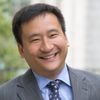The Peter Liang case has become a cause celebre among Asian-Americans. Or more precisely, it has become the foremost concern of Chinese immigrants on the internet at this moment. But it has confirmed the complexity of race in contemporary America. And it also has revealed the divisions among Asian-Americans.
Asian-Americans have never been united. It would be fortuitous if we were. "Asian-American" is fragile. The artificial term tentatively encompasses dozens of ethnicities, religions, and languages, in addition to political differences carried over from abroad as well as developed domestically.
Liang was recently convicted for manslaughter. A rookie New York City police officer of Chinese descent, he shot -- apparently accidentally and via ricochet off a wall -- Akai Gurley, an unarmed African-American, while patrolling a housing project. His cause has since been taken up by Chinese Americans who are concerned that he has been prosecuted while others (to be explicit, white peers) have not been, with the obligatory acknowledgment that nobody should be given a pass for causing the death of a Black man who had done nothing wrong. (It bears noting that African-American cops are facing charges related to other deaths -- ironically, people of color who wear a uniform might end up being blamed disproportionately along these lines, and in incidents that are not the most egregious.)
Prior to the Liang case, it was the Vincent Chin case that aroused Asian Americans. So many activists, now middle aged, were driven to their advocacy careers by the killing. In Detroit, the "Motor City," in 1982, seized in the throes of an earlier great recession, the Chinese American, celebrating a bachelor's party, was bludgeoned to death with a baseball bat by two Caucasian autoworkers who blamed him for the success of imported cars. It was mistaken identity twice over: Chinese for Japanese, American for foreign. When the perpetrators, who always admitted they had committed the act but consistently denied it was motivated by bigotry, received probation and a fine, a national protest began that had never been seen before.
Nor since, until now. The difference is that the Chin sentence, which also was about less what had happened (a death) than why (bar brawl or hate crime), outraged others as well. It was much more than Asian-Americans who marched, gave speeches, and wrote letters to newspaper editors. Jesse Jackson, for example, spoke at one of the fundraising events to demand justice.
As some Asian-Americans have invoked Chin, an iconic figure, to rally around Liang, his niece has written an essay explaining that the deceased was more similar to Gurley. She said Chin and Liang are not the same; they are opposites.
She is not the only one sympathetic to the Black Lives Matter" movement.
Asian-Americans on the left, and Asian-American elected officials who must work in coalitions, have been placed in an impossible position. They are expected to show solidarity with another Asian-American without pause, even as they try to advance social change in coalition with African-Americans who are outraged (not without reason) by the pattern of racial disparities.
Other Asian-Americans have expressed indifference to Liang. He, it is said, spurned earlier offers of assistance.
The tensions among Asian-Americans are not trivial. Asian-Americans who have reached out to the victim's family and friends have been reviled and threatened. It is other Asian-Americans who are issuing the ultimatums. In response, Asian-American civil rights activists, who represent a range of viewpoints, have defended those who called for prosecution of law enforcement officers regardless of race.
The responses to Liang reflect generational change -- in terms of immigrant status, not age. The newcomers, many more now from mainland China compared to the past influxes from Taiwan (highly skilled, on educational scholarships) and Hong Kong (influenced by British colonial rule, in all its glory and otherwise), are arriving as their homeland is ascendant, with enough critical mass to form distinct communities. They can insulate themselves, choosing the terms of their assimilation, in contrast to those who were forced into isolation, whether in an ethnic ghetto or alone among whites.
The Liang case shows again the overwhelming power of social media. In this instance, the mode of communications is thoroughly Chinese. Thanks to the availability of the Chinese competitors to Facebook and Twitter, those who have journeyed around the globe can remain in a parallel universe online -- where the majority remains Chinese and centered on their own interests. Despite being marginalized on the street here, those who are in that pejorative phrase "fresh off the boat" can retreat virtually someplace where they are comfortable and dominant.
We prefer our racial dramas to feature villains and victims. We are pained by ambiguity and complexity. Yet so many situations present us with difficult subtleties; for each of us, our personal experiences frame our impressions of the scene, and none of us can claim to have a comprehensive, objective understanding of the facts. (Like everyone else, I cannot help but occupy a vantage point. On the one hand, most of my tenure as a professor was at Howard University, a historically black school. On the other hand, I have already suggested Liang was subjected to selective prosecution in colloquial terms if not by legal standards.)
Asian-Americans sometimes have been able to perceive clearly, because we are neither black nor white. Our sympathies, collectively and individually, can alternate from the one side to the other side, or even be simultaneously with both or none. For that reason, we should be committed to investigating and adjudicating each particular case on its specific facts, through a fair process. Prejudice is defined by preconception.
The Liang case, poignantly, reminds us that we cannot assume we are somehow above the conflict. We, too, can be involved.
That is why we must be engaged. We must come to terms with the Peter Liang dilemma. We have a stake in how diversity works. All of us in a democracy do.
